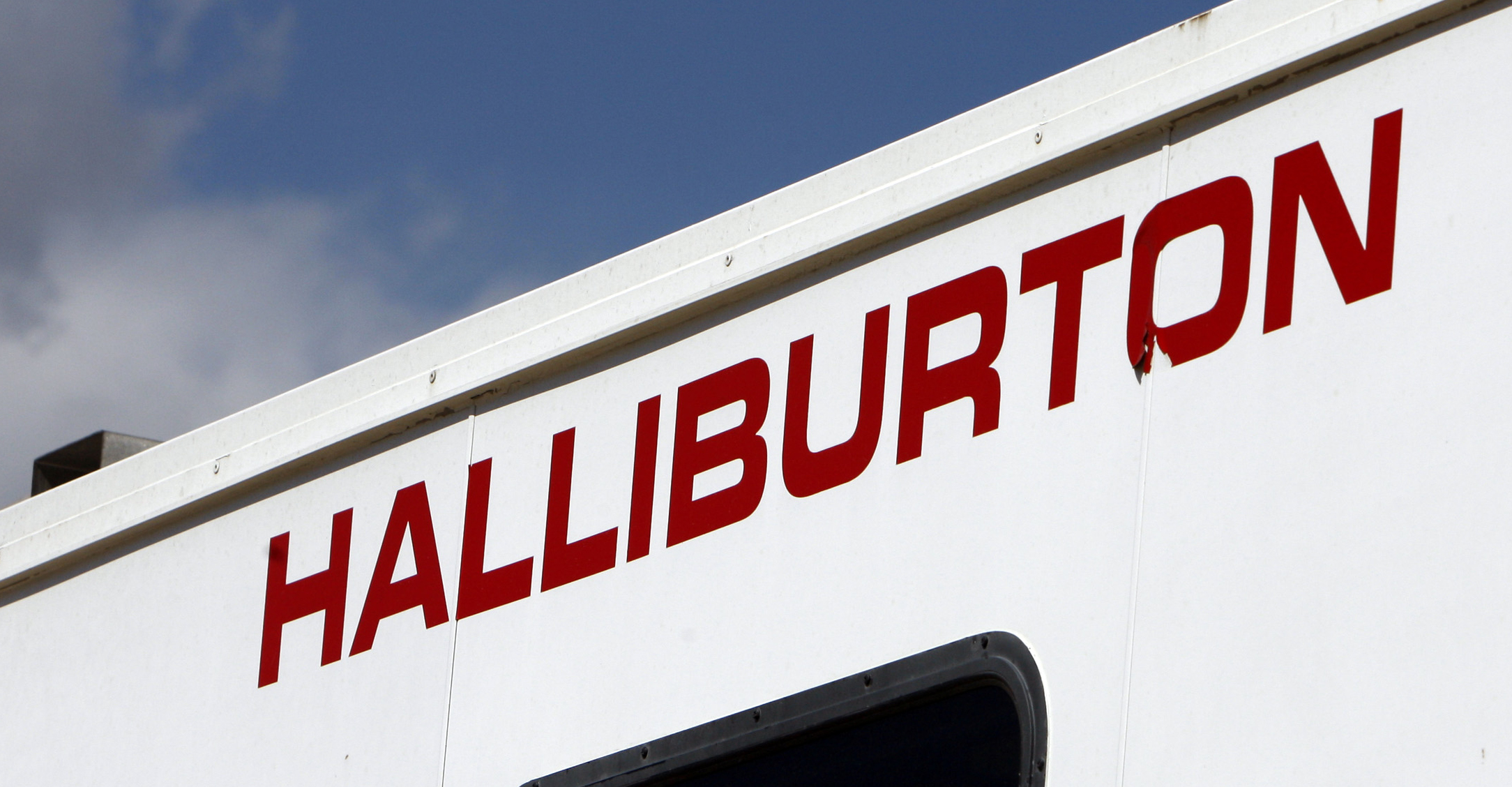Halliburton had completed the final cementing of the oil well and pipe just 20 hours before the blowout last week.
Investigators delving into the possible cause of the massive gulf oil spill are focusing on the role of Houston-based Halliburton Co., the giant energy services company, which was responsible for cementing the drill into place below the water. The company acknowledged Friday that it had completed the final cementing of the oil well and pipe just 20 hours before the blowout last week.
In a letter to to Halliburton Chief Executive David J. Lesar on Friday, Rep. Henry A. Waxman (D-Beverly Hills) chairman of the House Committee on Energy and Commerce, and Rep. Bart Stupak (D-Mich.), chairman of the Subcommittee on Oversight and Investigations, called on Halliburton officials to provide all documents relating to “the possibility or risk of an explosion or blowout at the Deepwater Horizon rig and the status, adequacy, quality, monitoring, and inspection of the cementing work” by May 7.
In a statement Friday, Halliburton said “it is premature and irresponsible to speculate on any specific causal issues.” The company had four employees stationed on the rig at the time of the accident, all of whom were rescued by the Coast Guard. “Halliburton had completed the cementing of the final production casing string in accordance with the well design,” it said. “The cement slurry design was consistent with that utilized in other similar applications. In accordance with accepted industry practice … tests demonstrating the integrity of the production casing string were completed.”
More than two dozen class action lawsuits have been filed after the explosion against BP PLC, the British company that leased the Deepwater Horizon rig, against the rig’s owner, Transocean Ltd. and against Halliburton. BP is “taking full responsibility” for the spill and will pay for legitimate claims by affected parties, company spokeswoman Sheila Williams said.
Cement is used at two stages of the deep-water drilling process. It is used to fill gaps between the well pipe and the hole drilled into the seabed so as to prevent any seepage of oil and gas. And it is used to temporarily plug an exploration hole before production begins. At the time of the accident, the Halliburton statement said, “well operations had not yet reached the point requiring the placement of the final cement plug which would enable the planned temporary abandonment of the well.”
Experts say cementing is a basic part of drilling, exploration and production of oil on the sea floor. Drill ships or rigs plant large pipes called “conductors” on the sea floor, and casings, or nested pipes, are placed inside of them. The pipes are fixed in place by cement, some hanging inside other pipes, and a drill string is run down a casing, and extended to the sea floor to bore holes.
Mud works its way back up the pipes and the “riser,” a pipe that connects the drill site to the ship or rig above. Or oil is brought up. Cement fixes the operations in place. Cement may also be used to plug a well, pumped down the string until it comes up on the sides, and stops the hole.
Cementing a deep-water drilling operation is a process fraught with danger. A 2007 study by the U.S. Minerals Management Service found that cementing was the single most important factor in 18 of 39 well blowouts in the Gulf of Mexico over a 14-year period — more than equipment malfunction. Halliburton has been accused of a poor cement job in the case of a major blowout in the Timor Sea off Australia last August. An investigation is underway.
According to experts cited in Friday’s Wall St. Journal, the timing of last week’s cement job in relation to the explosion — only 20 hours beforehand, and the history of cement problems in other blowouts “point to it as a possible culprit.” Robert MacKenzie, managing director of energy and natural resources at FBR Capital Markets and a former cementing engineer, told the Journal, “The initial likely cause of gas coming to the surface had something to do with the cement.”
In its statement, the company said, “Halliburton originated oilfield cementing and leads the world in effective, efficient delivery of zonal isolation and engineering for the life of the well, conducting thousands of successful well cementing jobs each year.”
The company, which was once headed by former Vice President Dick Cheney, has been in the media spotlight before — under under fire in recent years for its operations as a private contractor in Iraq.
–Margot Roosevelt and Jill Leovy
Photo: The Halliburton sign adorns a machine at a site in Rulison, Colo. Credit: David Zalubowski/AP
April 30, 2010 | 9:13 pm
Source: Los Angeles Times
